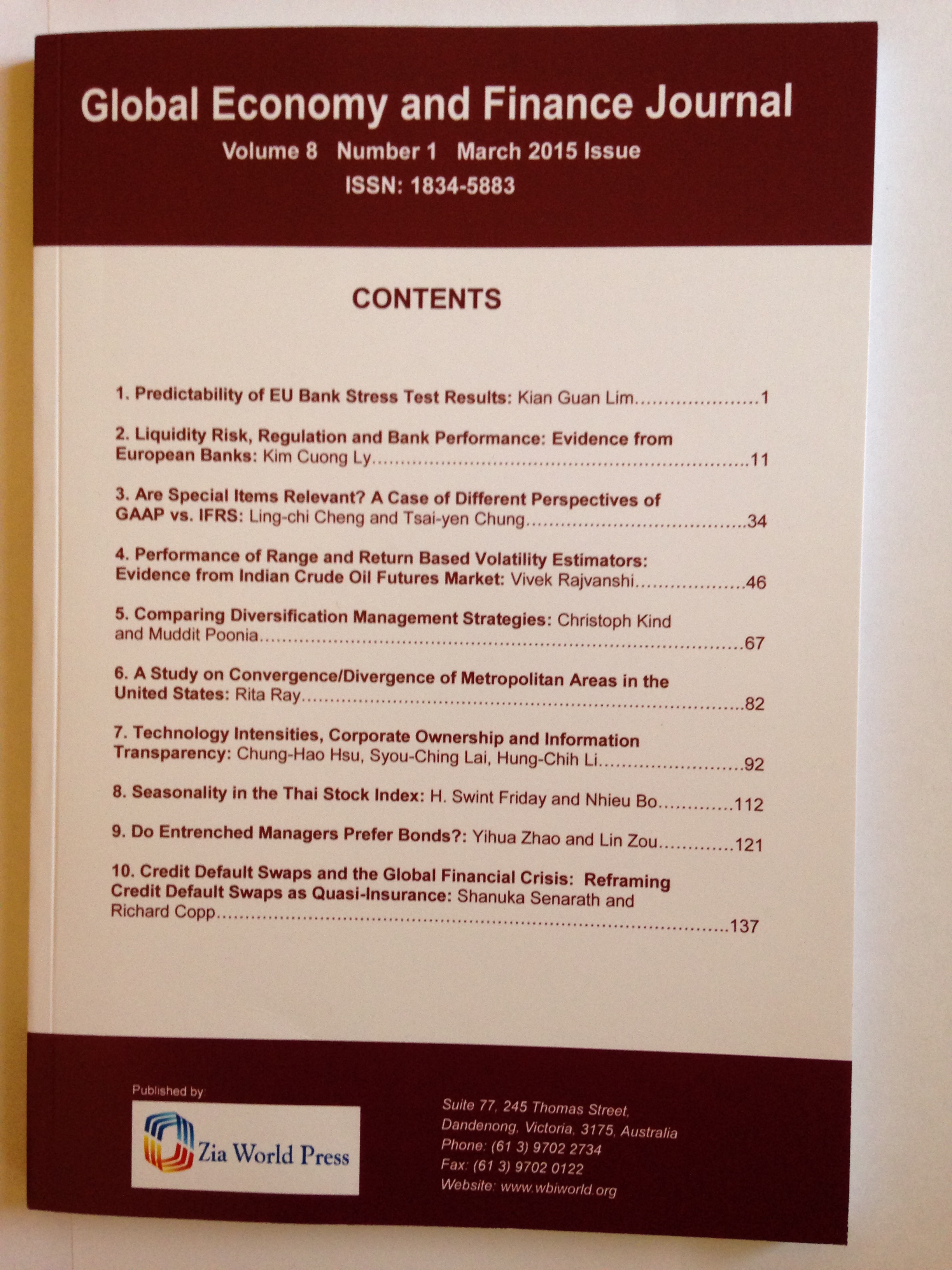Pages
56 – 66
This study focuses and compares the efficacy of two approaches of the transaction exposure (value at risk “VaR” and modified value-atrisk “MVaR”) for multinational enterprises (MNEs) conducting business in one and/or up to seven specific emerging markets for the duration of 2011-2014. The significance of this study is that it provides the optimal currency portfolio of emerging market currencies. These two approaches (VaR and MVaR) are compared with the ex-post results. The maximum 1-day loss is assessed, matched across the two aforementioned approaches, but also paralleled with actual results. These comparisons afford realistic evidence to assist MNEs to determine the level of their tolerance with respect to each version of value-at-risk over time. Moreover, these outcomes will present MNEs useful information in defining if hedging this risk is warranted. If they decide to hedge (due to the reversal of risk reduction at some point), MNEs need to contemplate as to which hedging technique (i.e., forward/futures, money market, and or option) to use given that the real cost of hedging could be positive.

